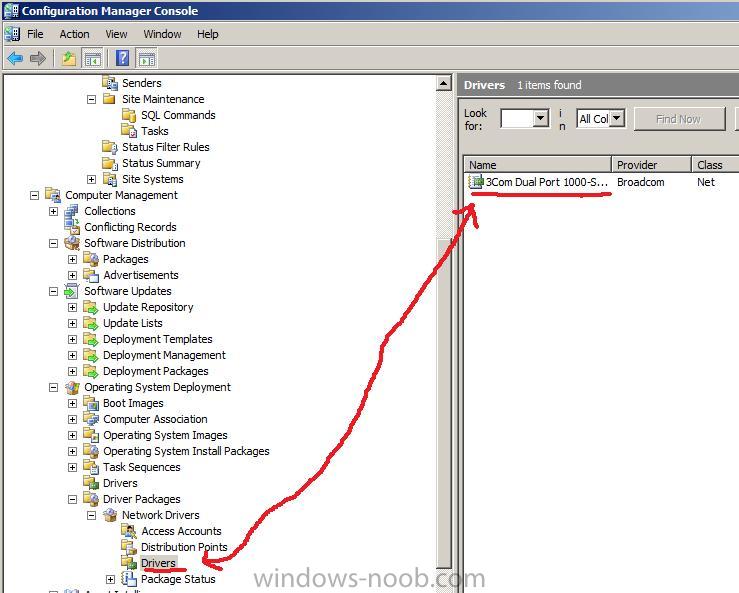You can add Windows device drivers that have been imported into the driver catalog to an existing driver package. Download Flashtool For Xperia Neo V Mt11i Driver. System Center Configuration Manager 2007. SCCM OS Deployment – How to create a Driver Package. SCCM OS Deployment – How to create a Driver Package. Microsoft Office 2007.
In my “ Migrating from Configuration 2007 to Configuration Manager 2012” session at the meeting in Copenhagen last Friday, I demonstrated a tool to automatically update the package source in Configuration Manager 2007. As promised, this tool is now available for. The background for the tool As we start migrating from CM2007 to CM2012 one of the requirements is that the package source used for packages must be a UNC. I have seen many site installations where the package source is either a local source on the site server or a UNC pointing to the site server.

In either case, you must somehow update the package source before starting the migration. Together with my colleague Jakob G. Svendsen I developed a tool that can assist you in the process. The tool can be downloaded here.
Use the tool In this example I will update two different package sources from the local CM2007 site server to my new file server. As you can see from the illustrations I have packages using two different sources: • • Both sources will be updated to the new source location which is Along with updating the source, I will also copy the files to the new location. • Start the tool by opening PackageSourceChanger.exe as administrator. Accept the license terms. • Click Configuration and type the name of the Configuration Manager 2007 server. Click Save when done. • I Find type: and click Verify.
• In Replace type: and click Verify. • Check Copy content from Old to new source.
• Click Select Packages and select the packages from the list. • Click Save when done. • Click Start to start the package source update process. • If you click Verify Location you should be able to see the packages in the new location. The Consequences You need to test and plan these package sources updates. Updating a package source will start a on all the distribution points. For even a medium size site this can take several hours.
This is a quick post about making driver packages in SCCM 2012. When making driver packages, organization is key.
Folder Layout • Your default folder layout for SCCM should look something like this, Sccm source$. The “source” folder should contain all of your information such as software packages, drivers and updates. • Make two folders in your source directory, one called “driversource” and the other called “driverpackages”. In the end it will look like this (ignore the other folders for now). Driver Source • Your “driversource” folder should contain a folder for each operating system you plan to use.
• Lets act like we are using a win7 machine. Inside the “Win7” folder you should have a folder for each machine that will need drivers. • Today we will be using the “Optiplex 960” or Opti960. Make a folder and call it “opti960”. Driver Robot Full Download.
Make two subfolders for named “x64” and “x86”. • Alright in our “x64” folder, there should be a folder for each driver to be installed.
All audio drivers should be inside a folder called “audio”, chipset drivers in a “chipset”etc. It should look something like this. • Try and keep these folders organized, if you do not, you may have to completely re-make this driver source folder in the future.
Driver Package • Most of the work for this is done in SCCM. The only thing we have to do is create a folder for our “opti960” computer.
Make a subfolder in sccm source$ driverpackages called “opti960 Win7”. Import Drivers and make driver packages • Open “Software Library” and expand the “Operating Systems Folder”. Right click on “Drivers” and click “Import Driver”.
• A menu named “Import New Driver Wizard” will appear. Input the source folder of the driver your trying to import. • Note: This step is very important, ensure you make a category for each type of computer! At the bottom of the “Driver Details” menu, click the “Categories” button. This will pop a small menu named “Manage Administrative Categories”, click the “Create” button. Specify the name of your new driver, and go to the next step. • At the bottom of the “Add Driver to Packages” menu, click the “New Package” button.
In the menu that appears, assign the driver package a name and path to driver package. • Hit next and the import will start. • The wizard will look like this is it completed successfully. • Now navigate to your sccm source$ driverpackages opti960 Win7 folder.
Your folder should look something like this. • You should be done! Please leave any questions, concerns or problems!